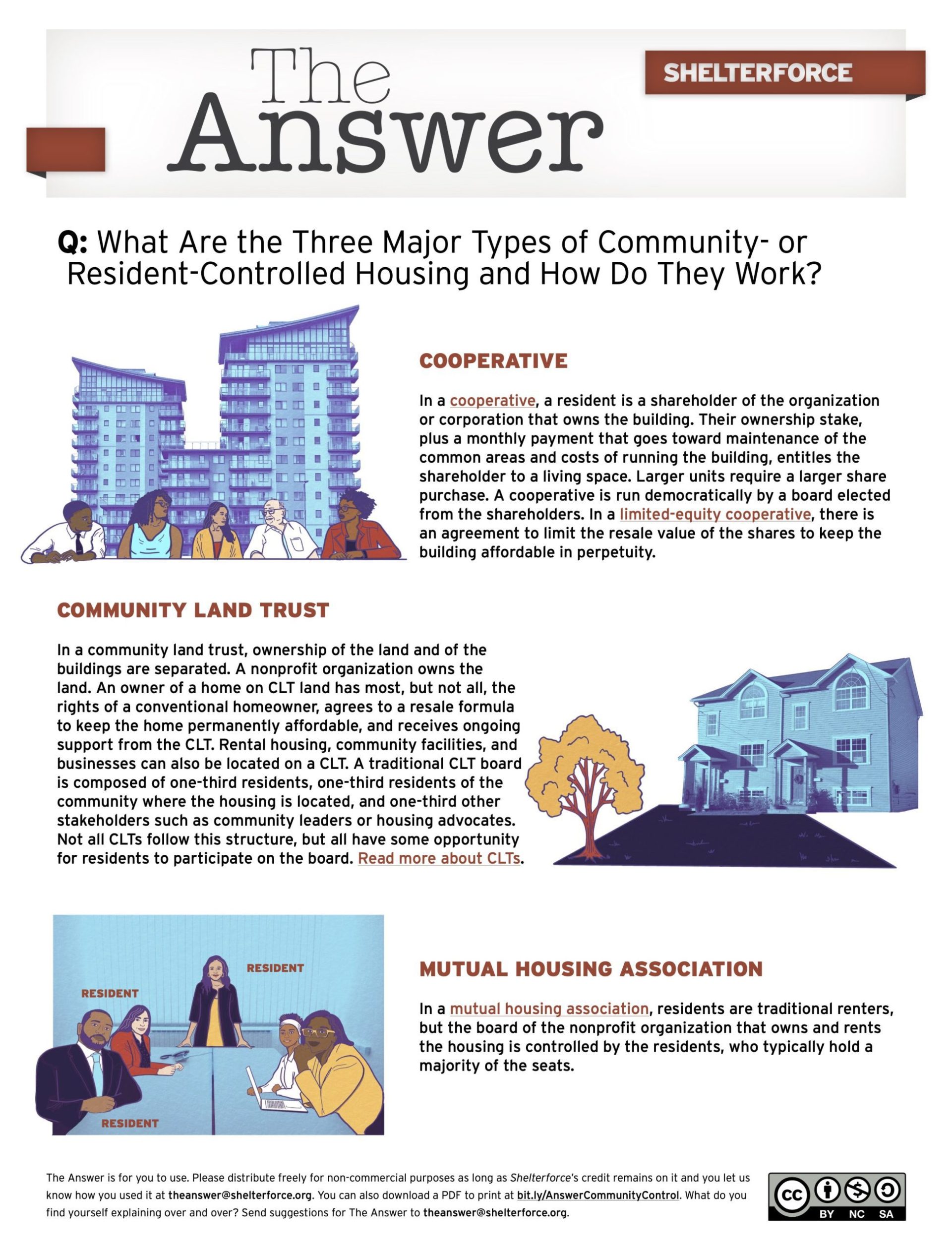
Cooperative
In a cooperative, a resident is a shareholder of the organization or corporation that owns the building. Their ownership stake, plus a monthly payment that goes toward maintenance of the common areas and costs of running the building, entitles the shareholder to a living space. Larger units require a larger share purchase. A cooperative is run democratically by a board elected from the shareholders. In a limited-equity cooperative, there is an agreement to limit the resale value of the shares to keep the building affordable in perpetuity.
Community Land Trust
In a community land trust, ownership of the land and of the buildings are separated. A nonprofit organization owns the land. An owner of a home on CLT land has most, but not all, the rights of a conventional homeowner, agrees to a resale formula to keep the home permanently affordable, and receives ongoing support from the CLT. Rental housing, community facilities, and businesses can also be located on a CLT. A traditional CLT board is composed of one-third residents, one-third residents of the community where the housing is located, and one-third other stakeholders such as community leaders or housing advocates. Not all CLTs follow this structure, but all have some opportunity for residents to participate on the board. Read more about CLTs.
Mutual Housing Association
In a mutual housing association, residents are traditional renters, but the board of the nonprofit organization that owns and rents the housing is controlled by the residents, who typically hold a majority of the seats.

Add new comment